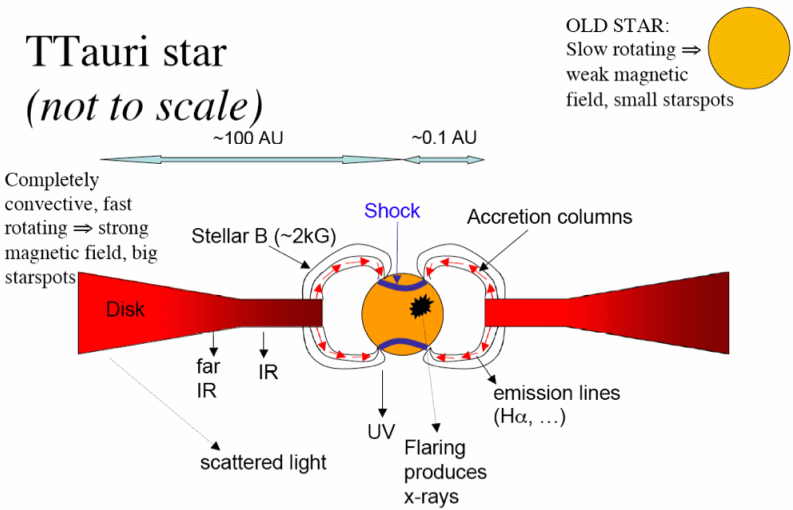Difference between revisions of "Finding cluster members"
m |
m |
||
| Line 3: | Line 3: | ||
=Introduction= | =Introduction= | ||
| − | [[Image:anatomy. | + | [[Image:anatomy.gif|right]] |
Whenever we study stellar clusters the question is: '''Which objects are the cluster members?''' This is easier with young clusters than old because the young stars are noticeably different than older stars, so it is easier to distinguish the young cluster members from the surrounding interloper stars (foreground and background populations). This process has a nice analogy with people too... when the IC 2118 teacher team came to visit the SSC, we all went out to lunch at a local Mexican place. If someone who didn't know any of us walked into the restaurant while we were eating lunch, as a group of astronomers, we are (for the most part! ;) ) not distinctly different than the rest of the adults in there, so we’d be difficult to pick out as a distinct ‘cluster’ of people, especially while we weren’t all physically co-located -- some of us were in line, getting salsa, and/or at the table. '''But''', if a group from a day care center had been there, it would have been immediately clearly obvious that the children were a group that was different than the rest of the people in the restaurant. Moreover, the amount of time a human spends as a child is short compared to their entire lifetime, and so it is with stars. You have to seek out the group of young stars/humans in order to study their development. | Whenever we study stellar clusters the question is: '''Which objects are the cluster members?''' This is easier with young clusters than old because the young stars are noticeably different than older stars, so it is easier to distinguish the young cluster members from the surrounding interloper stars (foreground and background populations). This process has a nice analogy with people too... when the IC 2118 teacher team came to visit the SSC, we all went out to lunch at a local Mexican place. If someone who didn't know any of us walked into the restaurant while we were eating lunch, as a group of astronomers, we are (for the most part! ;) ) not distinctly different than the rest of the adults in there, so we’d be difficult to pick out as a distinct ‘cluster’ of people, especially while we weren’t all physically co-located -- some of us were in line, getting salsa, and/or at the table. '''But''', if a group from a day care center had been there, it would have been immediately clearly obvious that the children were a group that was different than the rest of the people in the restaurant. Moreover, the amount of time a human spends as a child is short compared to their entire lifetime, and so it is with stars. You have to seek out the group of young stars/humans in order to study their development. | ||
Revision as of 23:05, 16 November 2007
This document is also called "Luisa’s Table of Characteristics of Young Stars for Determining Cluster Members".
Introduction
Whenever we study stellar clusters the question is: Which objects are the cluster members? This is easier with young clusters than old because the young stars are noticeably different than older stars, so it is easier to distinguish the young cluster members from the surrounding interloper stars (foreground and background populations). This process has a nice analogy with people too... when the IC 2118 teacher team came to visit the SSC, we all went out to lunch at a local Mexican place. If someone who didn't know any of us walked into the restaurant while we were eating lunch, as a group of astronomers, we are (for the most part! ;) ) not distinctly different than the rest of the adults in there, so we’d be difficult to pick out as a distinct ‘cluster’ of people, especially while we weren’t all physically co-located -- some of us were in line, getting salsa, and/or at the table. But, if a group from a day care center had been there, it would have been immediately clearly obvious that the children were a group that was different than the rest of the people in the restaurant. Moreover, the amount of time a human spends as a child is short compared to their entire lifetime, and so it is with stars. You have to seek out the group of young stars/humans in order to study their development.
Astronomers use as many of the following characteristics of young stars as possible to determine cluster membership, and we will do the same.
After reading this table, if you now go back and look at Maria Kun’s original IC2118 papers, see how many of these items she’s listing in making her case that she’s found young stars in IC 2118. I haven’t done this. Have I missed any in the list below?
Anatomy of a young star system (for reference) is to the right.
